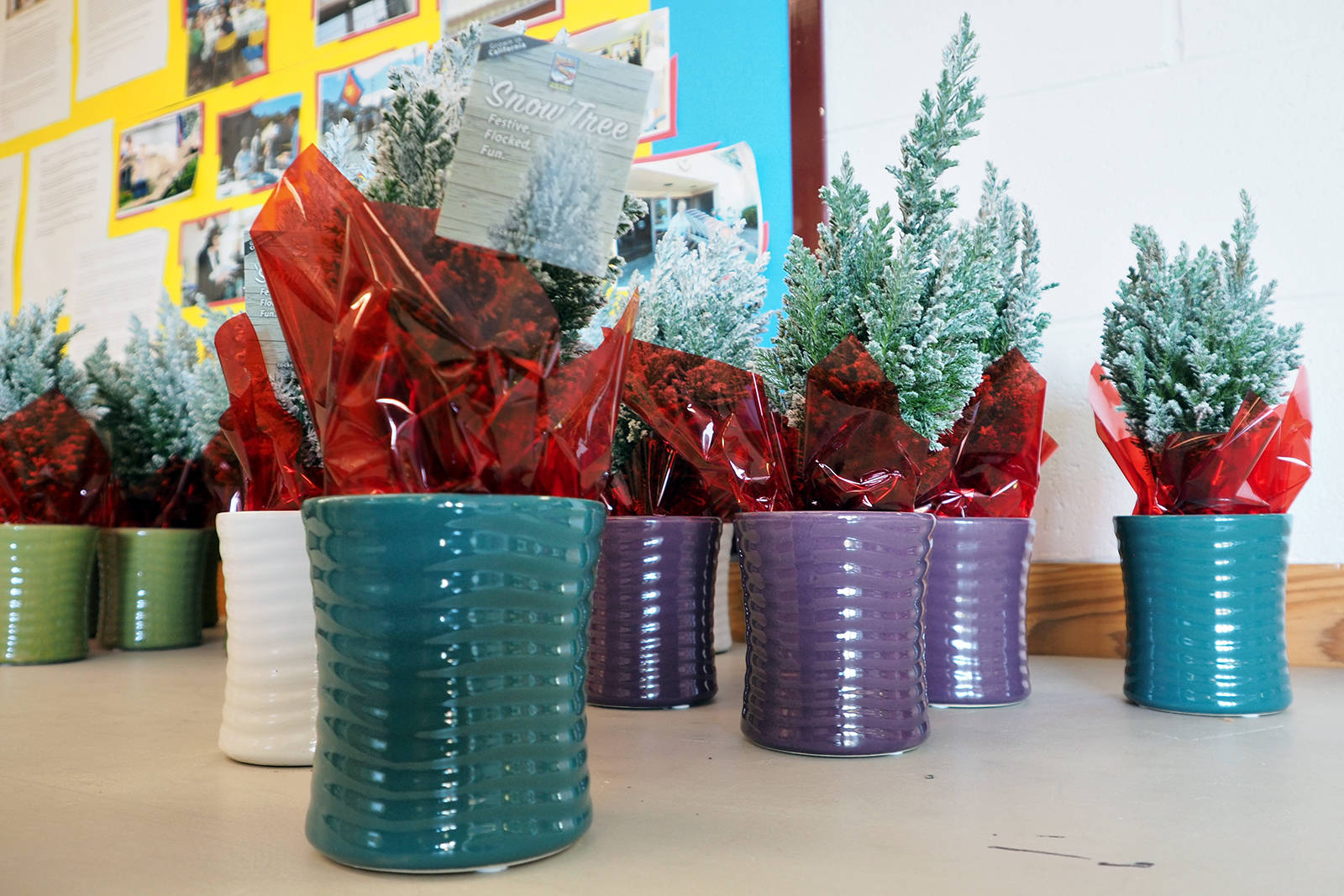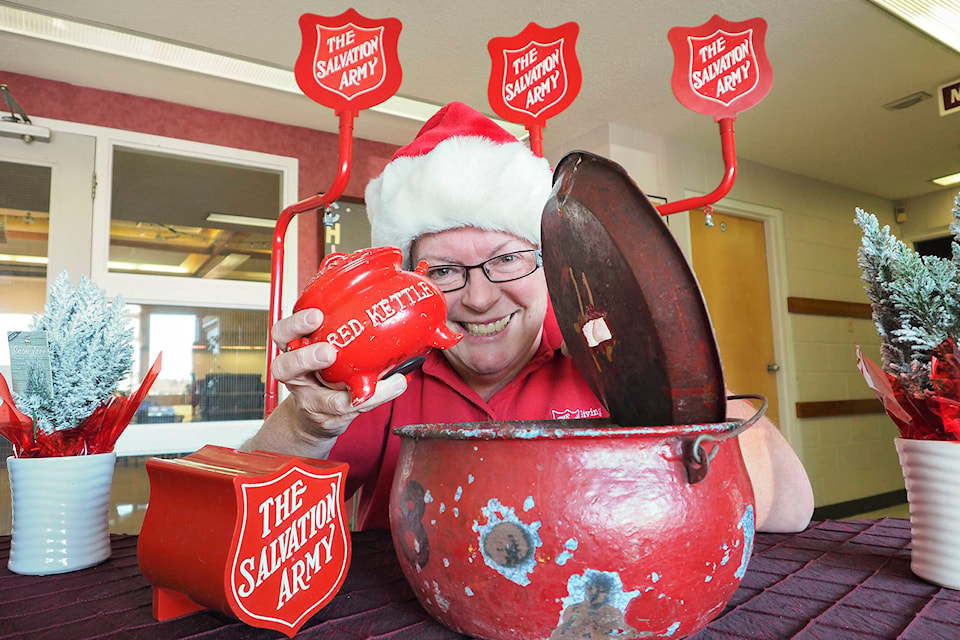Dawne Anderson, Salvation Army envoy in Nanaimo, doesn’t get a lot of reprieve from the telephone when the Salvation Army’s Christmas Kettle Campaign gets underway.
This year’s campaign started Nov. 20 and volunteers will be out with kettles 10 and a half hours a day, every day except Sundays, until the drive ends Dec. 24.
The Salvation Army Christmas Kettle Campaign originated in San Francisco, Calif., in 1891. Canadian Christmas kettle drives began in Toronto, Ont., in 1903. In 128 years the donation drive has become the Salvation Army’s largest annual fundraiser.
“Our target this year is $550,000,” Anderson said.
The target figure represents donations made to kettles and mailed-in donations received by the end of the campaign.
Organizing volunteers to man kettles to raise hundreds of thousands of dollars takes a lot of juggling from Anderson and her staff. The Christmas tradition of people standing by kettles, jingling sleigh bells or singing Christmas carols will require more than 7,200 volunteer hours to man the nearly 2,900 kettle shifts throughout the campaign in the Nanaimo area.
But volunteers are a fluid commodity. In a span of about 30 minutes Monday afternoon Anderson’s phone rarely stopped ringing with calls from kettle volunteers who completed their shifts, but their replacements hadn’t turned up, or from others who couldn’t make their shifts. In one case a volunteer committed to several kettle shifts had to bow out because of a serious medical condition. With each call Anderson’s volunteer schedule, maintained on database software, must be revised and instructions relayed through staff to deal with each situation.
Interspersed are calls from individuals and local businesses offering to help, but the needs of each volunteer vary per individual. Some can only take kettle shifts at indoor locations or are only available certain times of day on specific days. Others want locations suitable for children or close to home. Some can take multiple shifts throughout the campaign. Others just one. A volunteer schedule sheet printed out in the morning likely won’t look much like it did by mid afternoon and this year the kettle drive scheduling seems to be taking longer than normal to stabilize.
“We have 25 locations, from north Nanaimo to Ladysmith, four shifts a day, from 10:30 a.m. till 9 p.m.,” Anderson said. “We need as many [volunteers] as we can get, because it’s a slower start. Every year seems to be a slow start, but it just seems slower this year. I’m not sure why.”
The process of drawing donations might seem difficult, but effort put in to getting them helps people locally. Money donated in Nanaimo stays in the community to support Salvation Army social service programs that help individuals and families through housing and shelter programs, meals programs and food banks, substance abuse rehabilitation programs, Christmas assistance that includes food hampers and toys for families, and more. The Salvation Army also responds to disasters and offers a wide variety of other services for the communities in which it operates.
To raise the money to finance all of the Salvation Army’s services the organization needs hundreds of volunteers.
“Just as many as we can get,” Anderson said. “Just keep phoning.”
To volunteer for this year’s Christmas Kettle Campaign, call Anderson at 250-740-1004 or e-mail kettles@sananaimo.org.
Another way to contribute to this year’s Christmas Kettle Campaign is to buy a little snow tree. Called Snow Trees, the real trees come in their own little ceramic pots and are covered with a cotton flocking to make them look as if they’re dusted in snow. They can stand in as tiny Christmas trees for people with apartments with extremely limited space or even as something Christmassy on a desk at work. Once they outgrow their pots, the little evergreens can be planted outdoors where they will grow up to be 4.5 metres in height.
The trees can be purchased for $12 each and sale proceeds support the Salvation Army.
photos@nanaimobulletin.com
Like us on Facebook and follow us on Twitter

